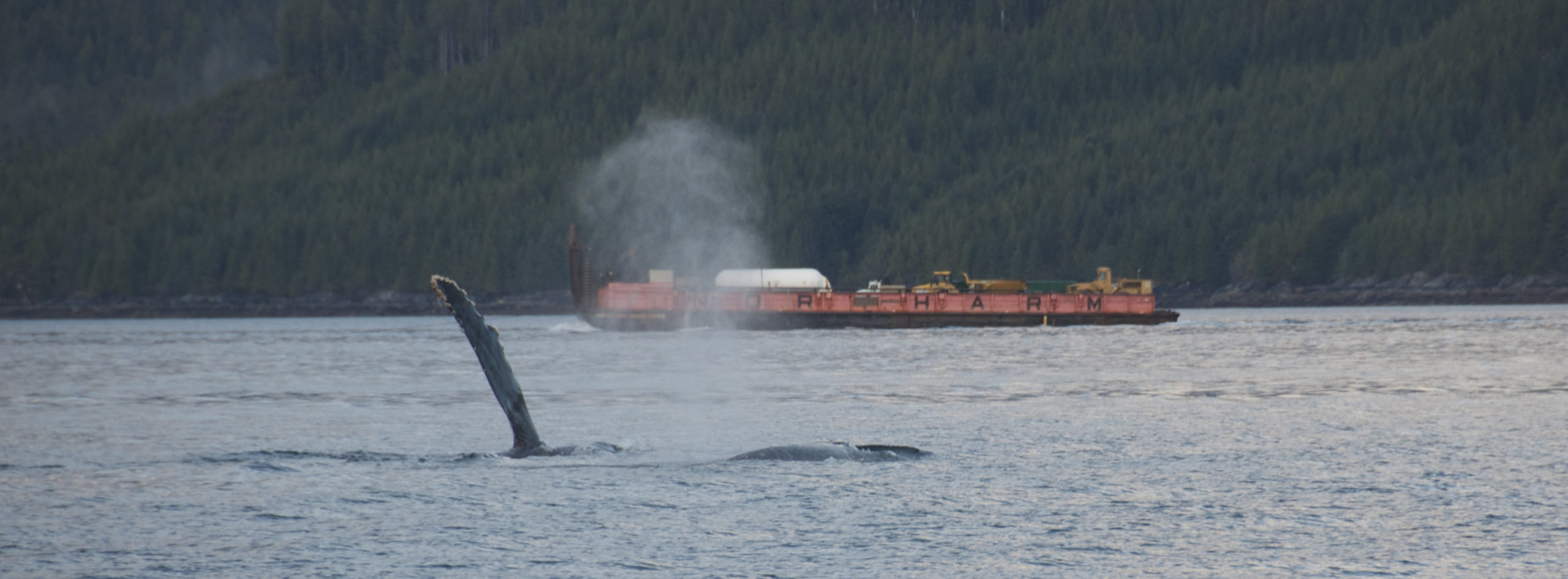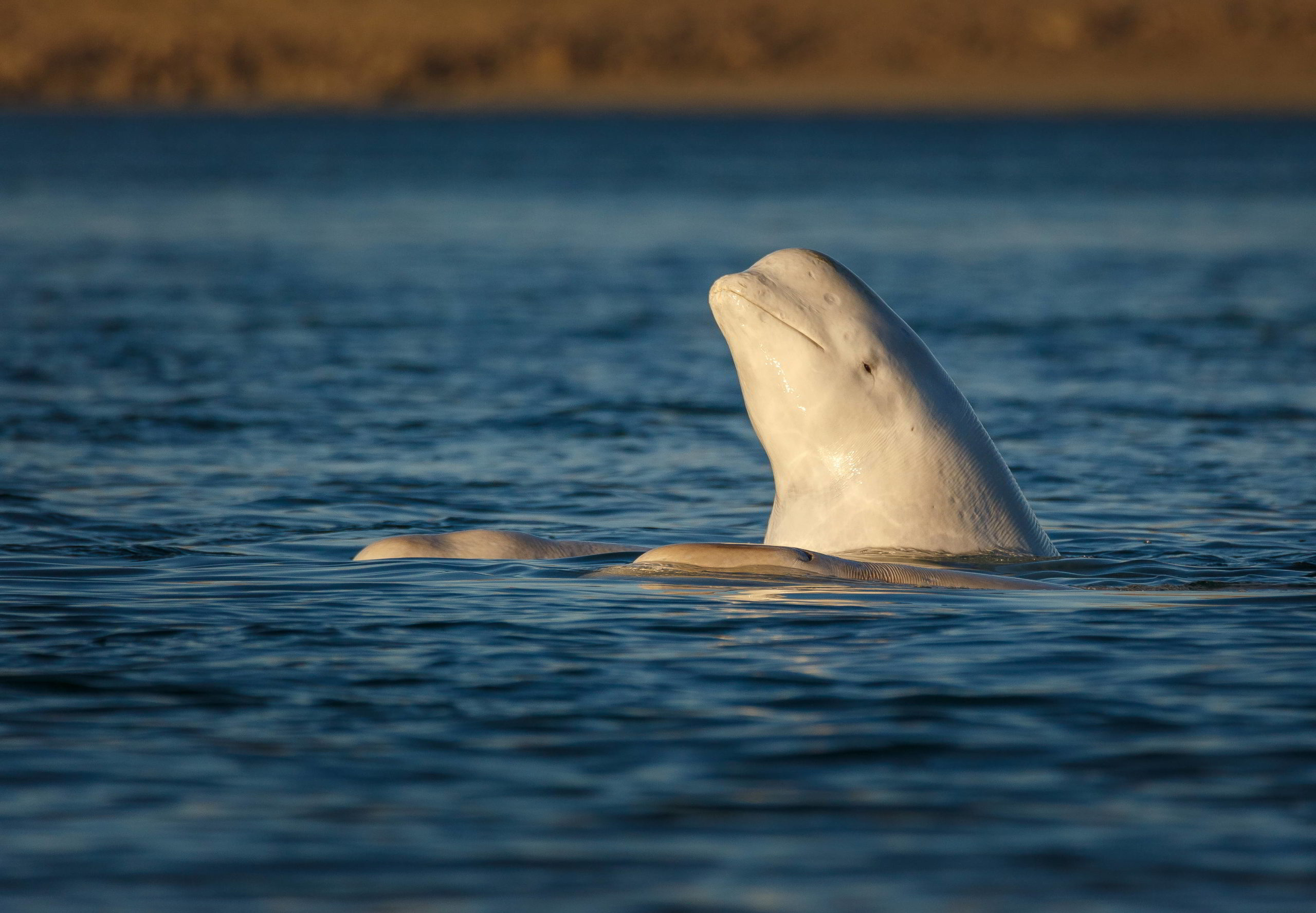As underwater noise rises rapidly, Canada’s laws fall short — here’s how to fix that
Canada’s oceans are full of marine species using grunts, calls, clicks and whistles to communicate with one another across vast distances. The hauntingly beautiful sounds of whale songs, for instance, can travel thousands of kilometres underwater.
Unfortunately, these natural sounds — which are also critical for these marine species to navigate, hunt, find mates and avoid danger — are being drowned out by human-made underwater noise pollution.

Thunderous rumbles of ships passing overhead, deafening seismic blasts from seabed oil and gas extraction, and the pounding pulse of ever-expanding coastal marine construction are masking natural soundscapes. In fact, some regions within Canada’s oceans are already 100 times louder than they would be naturally. All this excess noise can temporarily or permanently damage the hearing of animals close to the source, increasing the risk of being injured or killed by a ship strike.
To mitigate and manage underwater noise, the federal government committed in 2020 to develop a draft national Ocean Noise Strategy by the following year, a final strategy expected to begin implementation in 2023.
We’re now halfway through 2024, and have yet to see even the draft.
To help make sense of the current legal environment surrounding underwater noise management in Canada — and to inform the creation of a strong strategy — WWF-Canada commissioned East Coast Environmental Law and West Coast Environmental Law to conduct a legal analysis of federal legislation and policy relevant to the eventual strategy’s implementation.

The findings are clear. Canada hasn’t explicitly incorporated underwater noise into existing marine conservation laws or regulations. And the legislative tools that Canada does have are underutilized, and lack clear targets and important features that would make protection efforts legally binding, measurable and enforceable.
Though our understanding and awareness of underwater noise impacts have risen rapidly in recent years, the same cannot be said for Canada’s relevant legislative and regulatory tools. Some regulatory mechanisms that apply more broadly to the environmental quality of the oceans, and could protect ocean ecosystems from the effects of noise pollution, are not being effectively used.
The Marine Environmental Quality (MEQ) provisions in the Oceans Act, for example, could limit underwater noise pollution by establishing targets and thresholds for human-generated noise. Yet aside from guidelines for seismic activities, MEQ provisions have not been used —and it is unclear why.
As another example, Canada’s Species at Risk Act (SARA) prohibits the harm or harassment of species at risk, as well as the destruction of their critical habitat. Yet there are currently no policies within SARA to define or develop minimum noise thresholds to mitigate harm, harassment or destruction of a species’ acoustic habitat.
Generally, any adverse effects to acoustic habitat in SARA recovery strategies are described in qualitative terms, such as that noise levels do not result in “loss of habitat availability or function.” But such vague terms don’t outline clear limits that species can tolerate and are challenging to enforce without targets or guidance. This means that a species listed as “at-risk” (threatened, endangered, extirpated or special concern) can still be exposed to dangerously high levels of noise that threaten population survival.
It is essential to develop exposure limits and thresholds for critical habitat so noise can be effectively measured and reduced to levels that enable long-term population recovery. Targets need to be informed by biological limits (the volume different species are able to withstand without adverse impacts) and by local and Indigenous knowledge.
Special noise measures in Marine Protected Areas (MPAs) are another avenue to explore. The federal government has a number of statutes that enable them to designate certain areas as MPAs, and thus limit or regulate the types of human activities that can occur within their boundaries.

For example, each MPA established under the Oceans Act has a blanket prohibition on any activity that “disturbs, damages, destroys or removes” any living marine organism or its habitat within the MPA, along with other regulations which vary across MPAs.
In theory, this would include habitat disturbance and destruction from underwater noise. In reality, after the blanket prohibition is a list of exceptions for activities that are allowed within the MPA, which often includes cumulative noise-polluting activities like commercial shipping. This means the majority of Oceans Act MPAs are not quiet sanctuaries, but still let at-risk species suffer the effects of noise pollution (along with other polluting discharges from vessels).
The federal government must start prioritizing underwater noise impacts when developing and managing both new and existing MPAs, including measurable and enforceable area-based noise reduction targets based on the biological limits of the species being protected.

The above acts and regulatory mechanisms are just a few examples of current tools the federal government could use or strengthen to effectively monitor and regulate underwater ocean noise in Canada, and there is more to be done to effectively conserve Canada’s ocean ecosystems.
The complete report, Canada’s Ocean Noise Strategy: Legislation and Policy Analysis, provides a full list of legislative recommendations for Canada to finally take action for quieter oceans.
As we eagerly anticipate the release of the Ocean Noise Strategy, WWF-Canada continues advocating for a strong enough strategy to deliver meaningful, measurable and urgent action. To learn more about the impacts of underwater noise and what we can do to quiet the racket, click here.

